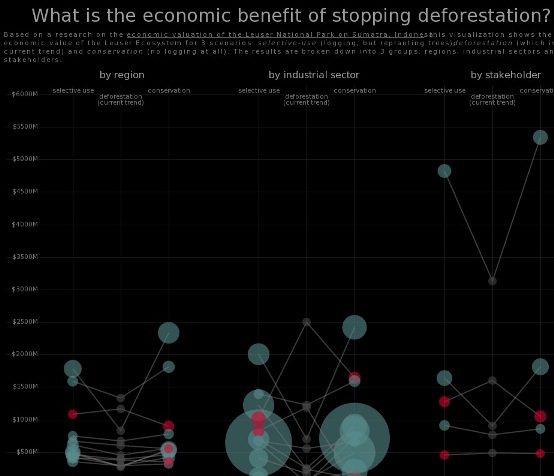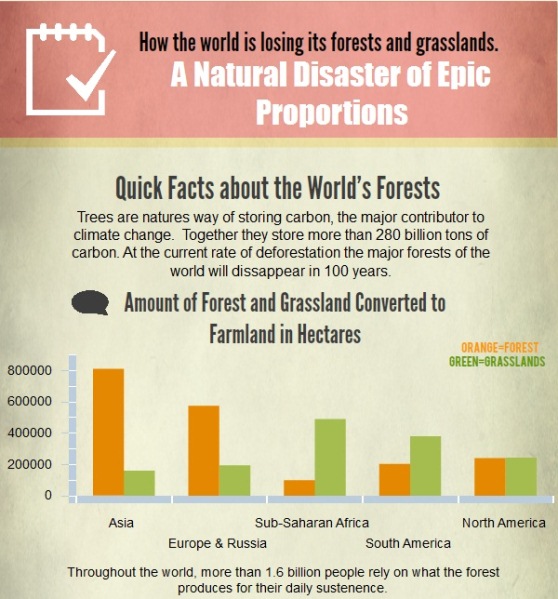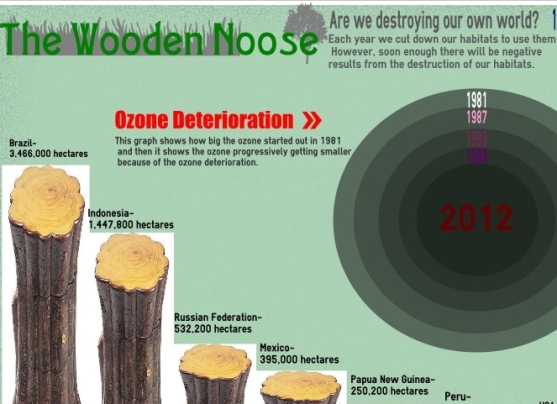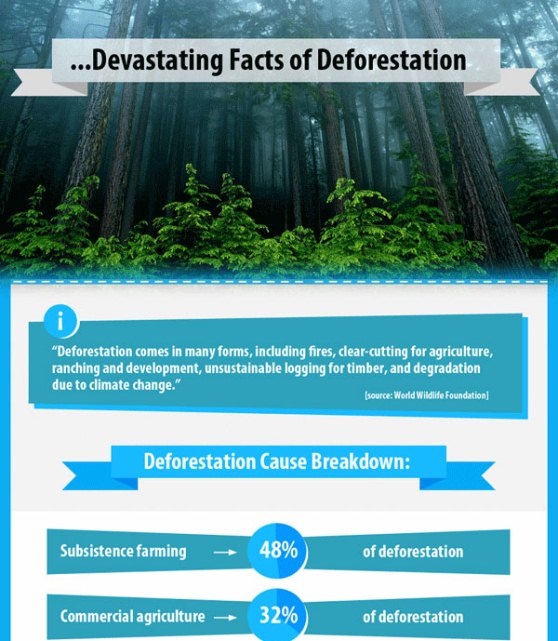Deforestation and Greenhouse Gases
The destruction ad degradation of forestland, caused mainly by expanded agricultural activity in tropical developing countries, currently accounts for roughly 12% of all greenhouse gas (GHG) emissions. Slowing or eliminating forest loss can potentially make a cost-effective contribution to an international effort to reduce global emissions, but that strategy faces a number of challenges.
 Source: cbo
Source: cbo
Economics of ending deforestation
Based on a research on the economic valuation of the Leuser National Park on Sumatra, Indonesia is visualization shows the economic value of the Leuser ecosystem for 3 scenarios: selective-use (logging, but replanting trees) deforestation (which is the current trend and conservation (logging at all). The results are broken down into 3groups: regions, industrial sectors ad stakeholders.
 Source: janwillemtulp
Source: janwillemtulp
How the World is losing its Forests and Grasslands
Trees are nature’s way of storing carbon, the major contributor to climate change. Together they store more than 280 billion tons of carbon. At the current rate of deforestation the major forests of the world will disappear in 100 years.
 Source: fourgreensteps
Source: fourgreensteps
Ozone Deterioration
Each year we cut down our habitats to use them for our own needs. However, soon enough there will be negative results from the destruction of our habitats.
 Source: amazon
Source: amazon
Devastating Facts of Deforestation
Deforestation comes in many forms, including fires, clear-cutting for agriculture, ranching and development, unsustainable logging for timber, and degradation due to climate change.
 Source: distancelearning
Source: distancelearning

